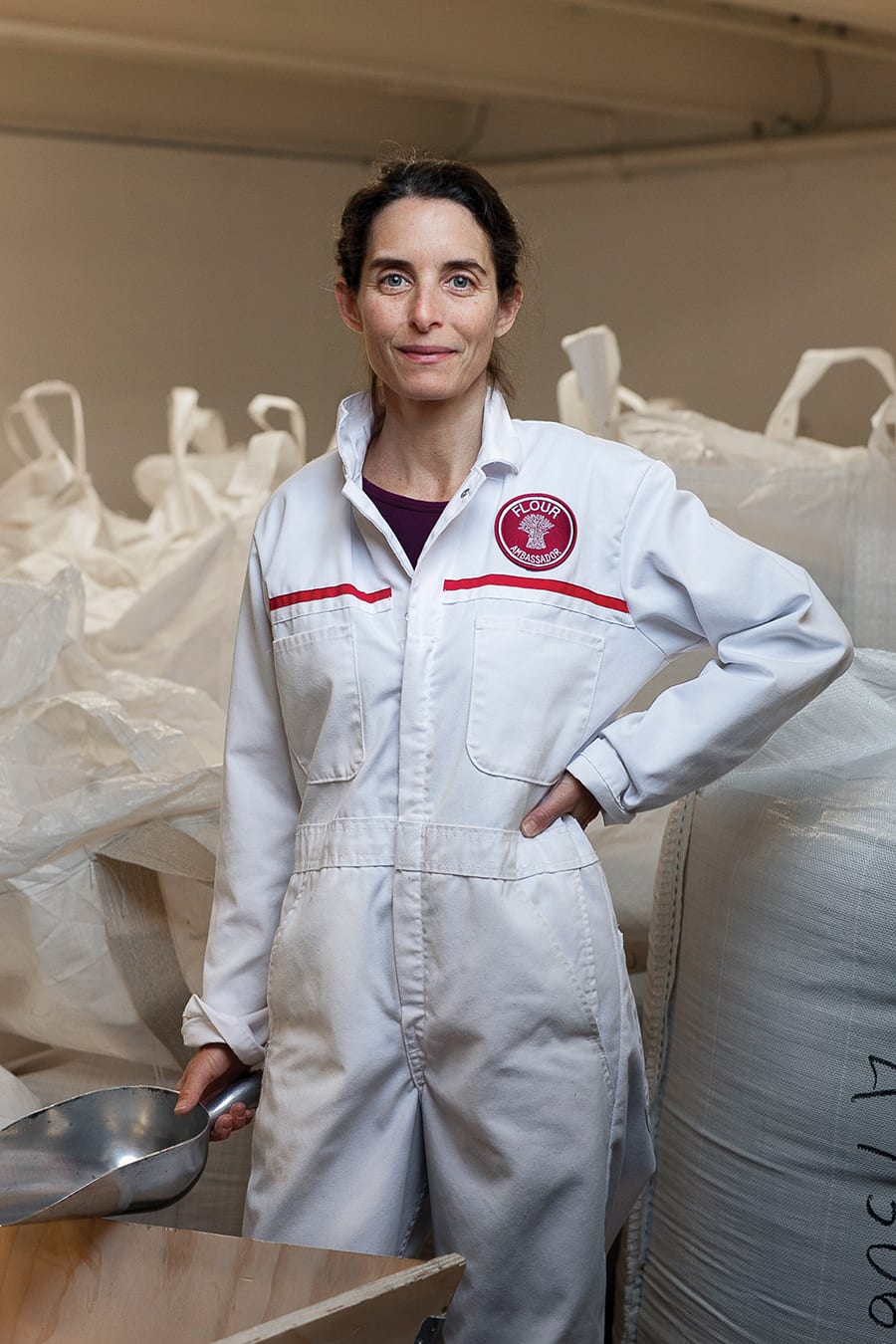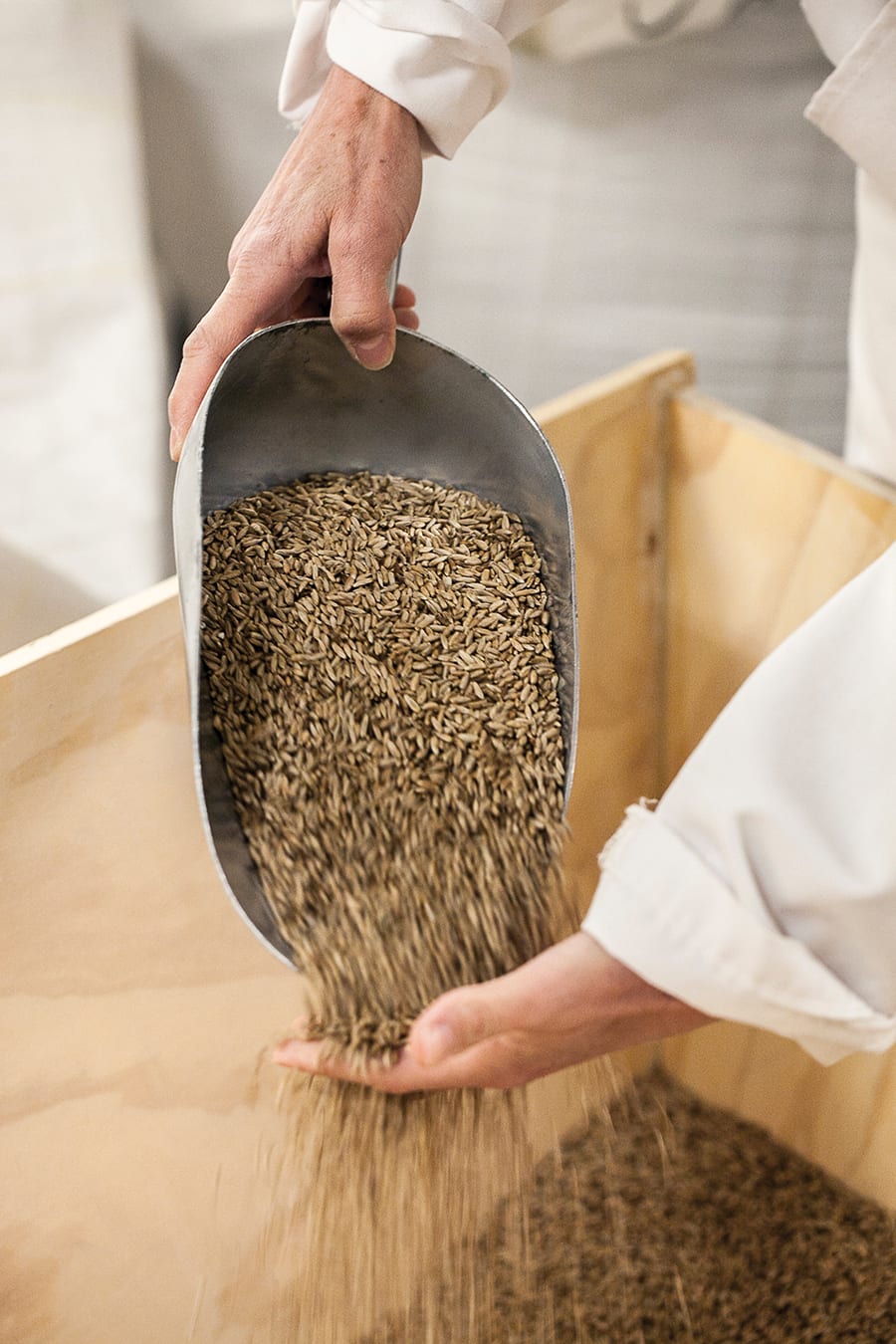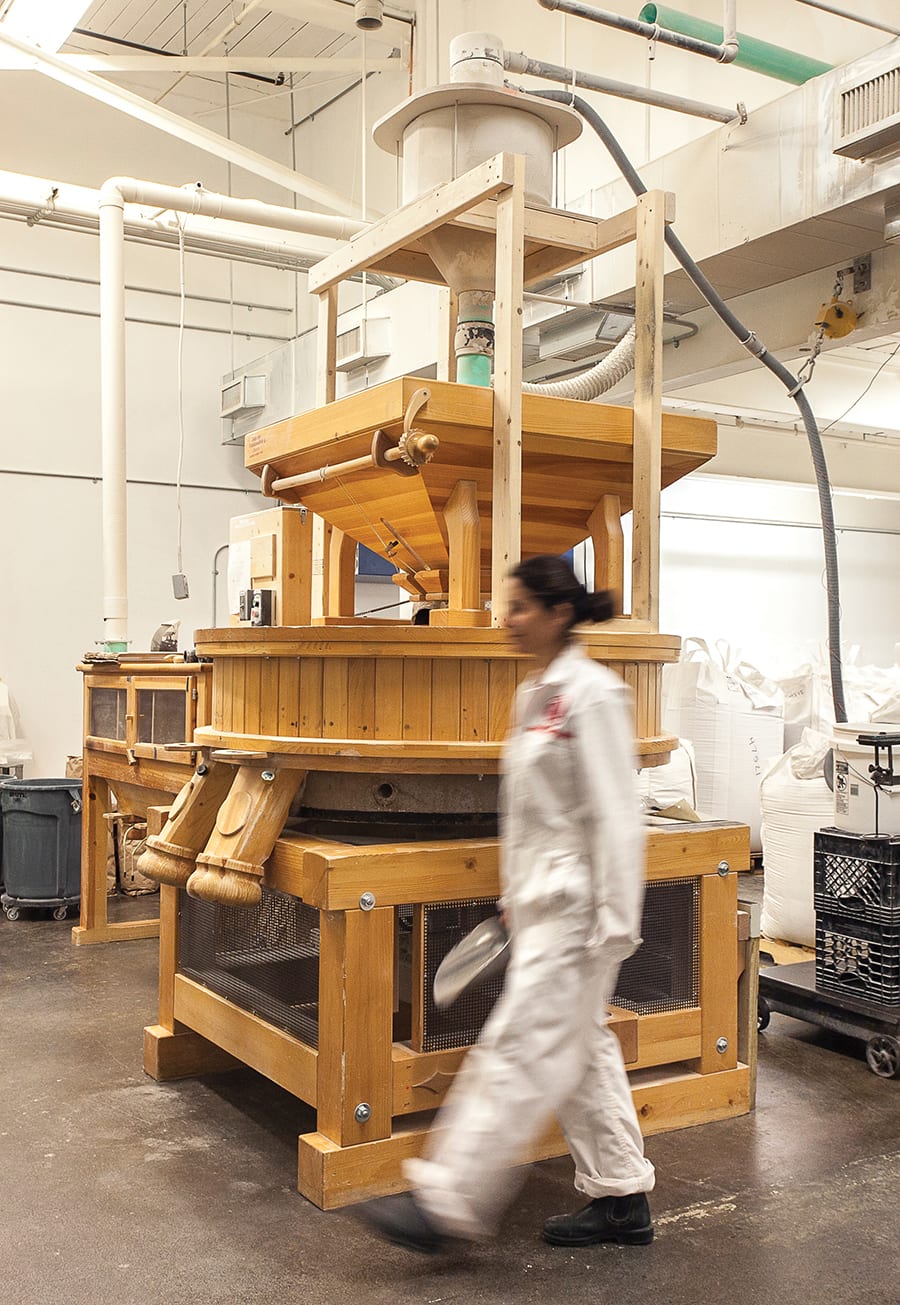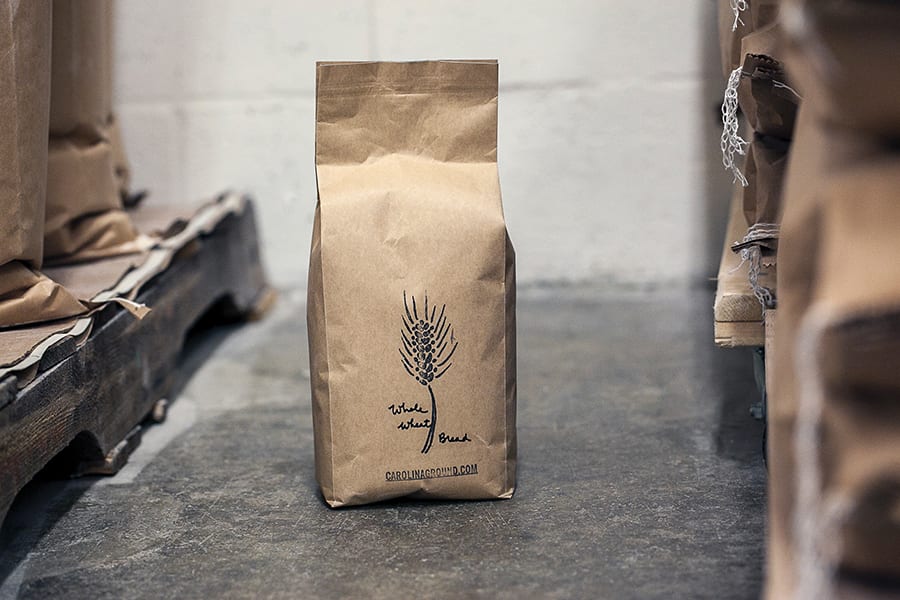
Imagine the baker archetype, tethered to the oven hearth while a humble brick of hand-mixed dough transforms into magic inside. Then there’s the farmer, skin ruddy and calloused, pouring blood and sweat into the earth and praying for sustenance in return.
Jennifer Lapidus, owner and founder of Carolina Ground, knows well the life of the former. She spent fourteen years as a baker of naturally leavened breads at her small wood-fired bakery in Marshall, North Carolina. The ideals of the latter inspire her daily.
But Lapidus is more interested in shifting paradigms than following old patterns. As the founder of Carolina Ground, a prototypical micro-mill and L3C (a sort of hybrid for-profit and nonprofit company with a social mission) in Asheville that works exclusively with local grain, Lapidus is staking new territory between the two worlds, forging the sacred—if often overlooked—link between farmer and baker.
For now, she manages this alchemy from a decidedly prosaic post: seated in her makeshift office in an old guard house at the entrance of a sprawling parking lot north of downtown Asheville. It’s just inside the fence surrounding the multi-use facility where Carolina Ground makes its home. Across the busy lot and inside a windowless room that once manufactured electrical equipment, a stone gristmill built in the forests of Austria hums alongside a sea of one-ton sacks brimming with fresh whole grains, mostly soft and hard red winter wheats, all grown on certified organic farms in the South.
What Lapidus’ guard house lacks in glamour, it makes up for in metaphor. Equal parts flour guru and intermediary between worlds, she represents a portal into sustainable food systems. That’s what got her here: the need to subvert the market “from the ground up,” as Lapidus likes to sign her blog posts on the Carolina Ground website.

In 2008, the housing bubble forced a rush on commodities, and the price of wheat hit the roof—at its peak, 130 percent—too high to pass along to customers. Burned out from baking, Lapidus was pursuing a master’s in writing, but she couldn’t tune out rumblings of concern from her baking community. Meanwhile, USDA wheat breeder David Marshall had established the viability of farming bread wheats in the Southeast—the humidity-averse crop had long evaded regional farmers.
Inspired, Lapidus wrote a grant proposal for what she called the North Carolina Organic Bread Flour Project, intent on closing the gap between farmers and bakers in the Carolinas. Funding came in from the North Carolina Tobacco Trust Fund, Santa Fe Tobacco, Community Foundation of Western North Carolina, and the Carolina Farm Stewardship Association. Lapidus convened six other bakeries from western North Carolina to join her in the pilot group. They raised money to procure a 48-inch stone-burr Osttiroler gristmill, built by the Green family in Austria, and transport it to North Carolina. Carolina Ground grew out of that successful experiment.
“I had baked for fourteen years, but I didn’t know what it looked like to plant wheat and grow it,” says Lapidus, who, nearly a decade after writing that grant proposal, insists the mill’s mission remains purely altruistic.
A word on hydration: Because Carolina Ground flours are stone-ground, they tend to absorb more liquid than commercially processed flours, so adjust recipes accordingly—increase liquids for bread, decrease for pastry.

Unlike with commercially processed flour, in which the bran and germ are stripped out on an industrial roller mill and later enriched with nutritional value, flour ground on a millstone retains flavor as well as nutrients. Carolina Ground’s mill uses the best of an ancient technology, but with modern sophistication—maintaining a slow rotation of stone and keeping the temperature below 100 degrees to protect the flour’s essence. The resulting flour is creamy in texture and hue.
Expanding the market for grain growers in the South is paramount, but so is the pursuit of an ever more beautiful flour, one with terroir and utmost quality. “As soon as I started milling, I realized this was more than a political and socio-economical mission. This needs to be something somebody would want even if it wasn’t local.”
Fresh flour that has maintained the grain’s integrity develops “a whole new palate of flavor,” says Lapidus, whether it’s turned into yeasted bread or pastry, waffles or quick bread. The better the flour, the more bakers she can convince to commit to local grains, which results in more acreage at regional farms.
Carolina Ground wholesale customers range from Lionel Vatinet’s celebrated La Farm Bakery and the Weaver Street Market natural foods co-op in the Research Triangle to Western North Carolina bakers including Smoke Signals and Flat Rock Village Bakery.

Lapidus cites radical creeds from the environmental activism of her youth: “You can organize a group, but you can’t tell them what to do. The more I can inspire the baker, the more ability they have to inspire their customers to eat well.”
After all, she’ll always be a baker at heart. “For me, with the bread,” she says, “it was always about being fed—whether soulfully or nutritionally.”
Carolina Ground’s Flour Power
The mill’s retail shop allows home bakers to elevate their craft; paying a premium for those products helps to support its greater mission. Baking with Carolina Ground flour is no act of charity though. It “shapes you as a baker,” says Lapidus, no matter your experience level. She likes to taste-test flour in waffles.
Among the most approachable flours available on Carolina Ground’s website is the AP85, an all-purpose flour that’s a blend of Pennsylvania-grown Appalachian white wheat and North Carolina-grown soft red winter wheat. The flavor leans more toward buttery than bold, Lapidus says, and plays well in a variety of applications, from artisan breads and biscotti to scones and pie crust.
Another take on an all-purpose flour is the Trinity Blend, a mix of hard white, soft red, and rye that complements apple pie and fig preserves in crusts, thumb print cookies, and waffles.
For artisan-style bread, Lapidus suggests the 75 bread flour, which can be used in recipes that call for whole wheat flour and white bread flour.
She also recommends the mill’s rye flours, made from Wren’s Abruzzi rye; she likes the light and crema variations for pastries, and the whole and light ryes for bread. Finally, the 85 bread flour, with 10 to 15 parts bran sifted out, is highly nutritious with a higher loft than 100 percent whole grain and is “lovely” in anything from a naturally leavened loaf to banana bread.
share
trending content
-
Long Live Oyster Season at Darling Oyster Bar
by TLP's Partners -
Recap: TLP x Charleston Wine + Food
by TLP Editors -
Exploring Mississippi: A Quintessential Southern Experience
-
Recipes From Our Summer Issue
by TLP Editors -
Elevate Your AWESOME with an Alpharetta Music Getaway
by TLP's Partners
More From Southern Makers
-
Kuluntu Bakery Bakes Barriers | Listen
-
Scouting a Good Cup of Coffee | Listen
-
A Hot Take on Southern Chili Lab
-
Zero Proof Living with Sèchey and Target
-
The ABCs of Mead | Listen





